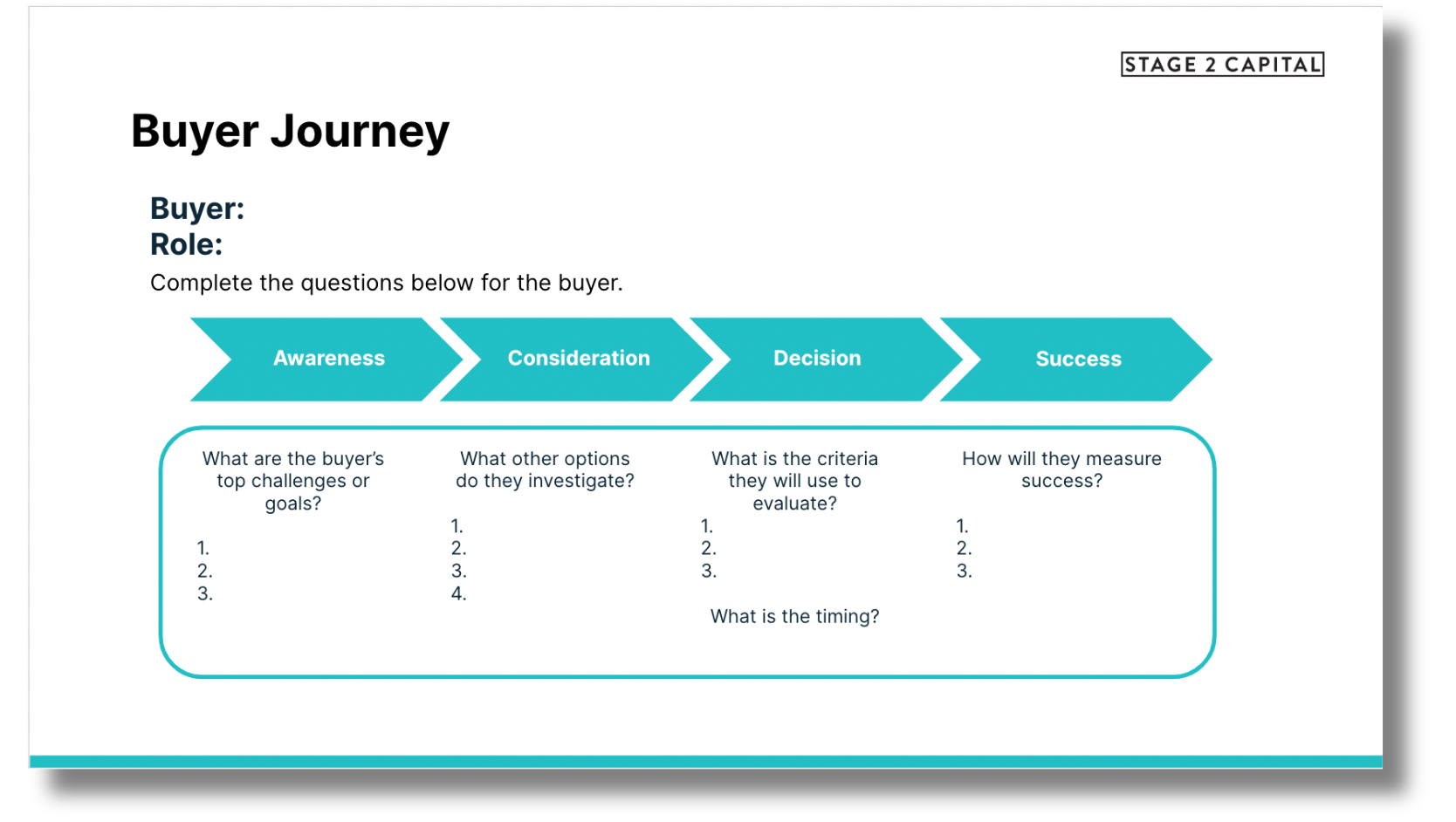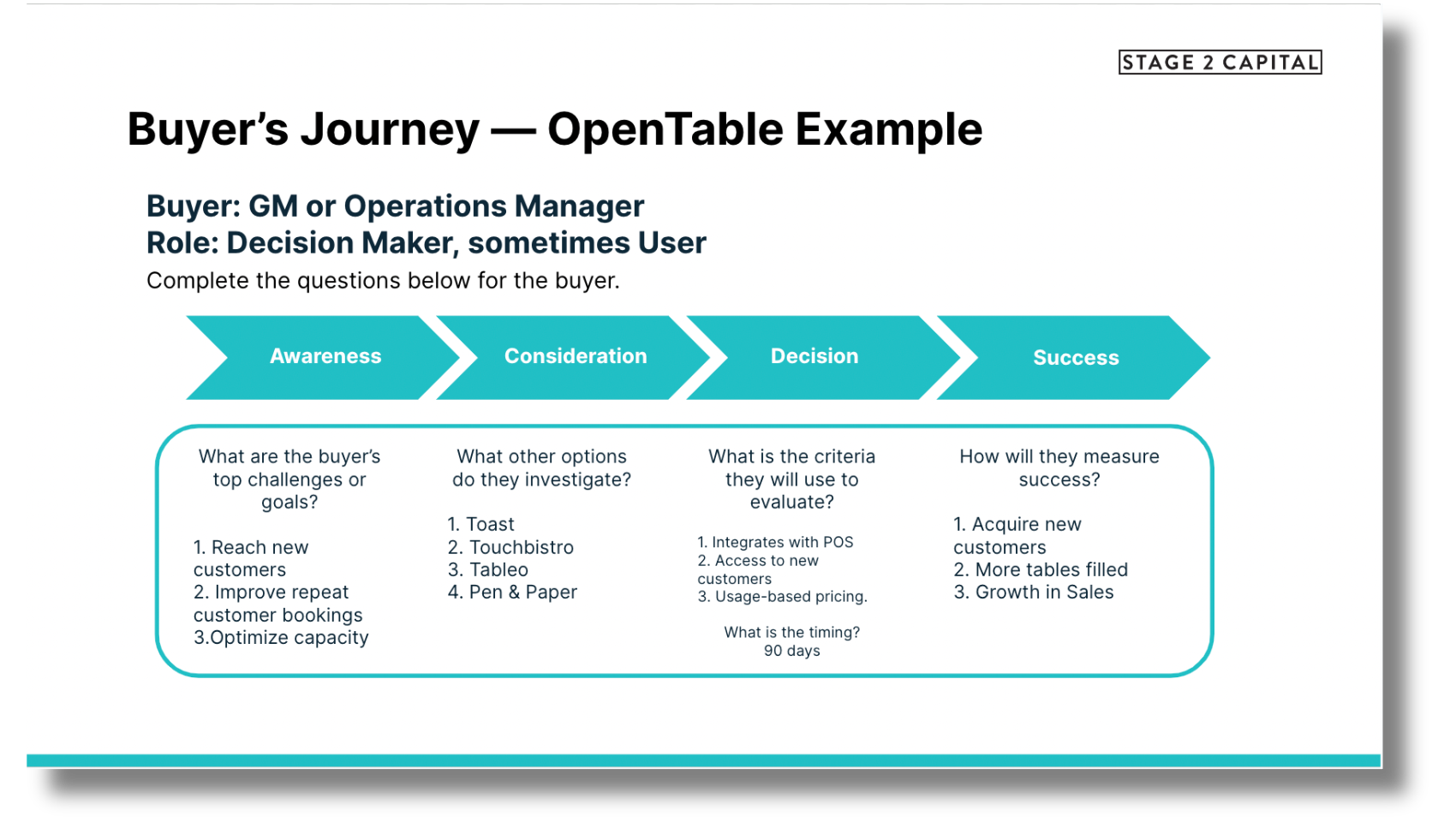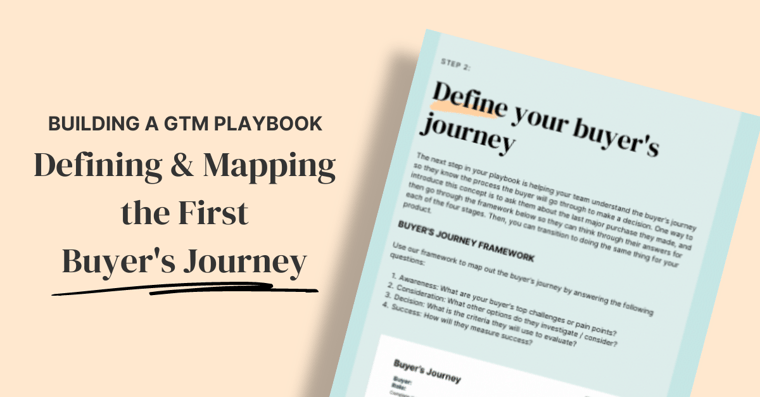Grasping the intricacies of the buyer's journey has become an imperative skill for any successful revenue team. The buyer's journey illuminates the path a potential customer takes from initial awareness to making a purchase decision, serving as a guiding light to crafting effective marketing strategies, enhancing customer experiences, and ultimately driving conversions.
One way for leaders to introduce this concept is to ask your team members about the last major purchase they made, and then go through the framework below so they can think through their answers for each of the four stages. Then, you can transition to doing the same thing for your product.
Buyer's Journey Framework
Use our framework to map out the buyer’s journey by answering the following questions:
- Awareness: What are your buyer’s top challenges or pain points?
- Consideration: What other options do they investigate / consider?
- Decision: What is the criteria they will use to evaluate?
- Success: How will they measure success?

Using the Buyer's Journey template, determine which answers are aligned or misaligned with your product. As you fill in each of the four stages with the answers you hear from your buyer, you may find that a few of them are not aligned with your product or what you are solving. These are important to identify and teach your team how to address them so they can see if they can move forward.
Example: If another option or alternative to your product is something that integrates with software that the customer has, and you do not integrate with that software, you would need to find out if that is critical to the customer to move forward.
Then, you can apply to your learnings to your elevator pitch. Legacy sales teams have elevator pitches that are product-focused and tell the buyer what your product does. Modern sales teams use elevator pitches that are buyer-focused and tell the buyer what your product solves — which ultimately results in a higher connect and conversion rate.
Here’s an example for OpenTable:
 Want some help putting these tips into action? I explain more about how to define your the buyer's journey in the video below:
Want some help putting these tips into action? I explain more about how to define your the buyer's journey in the video below:


.png?width=1200&height=627&name=GTM%20Playbook%20eBook%20cover%20(1).png)